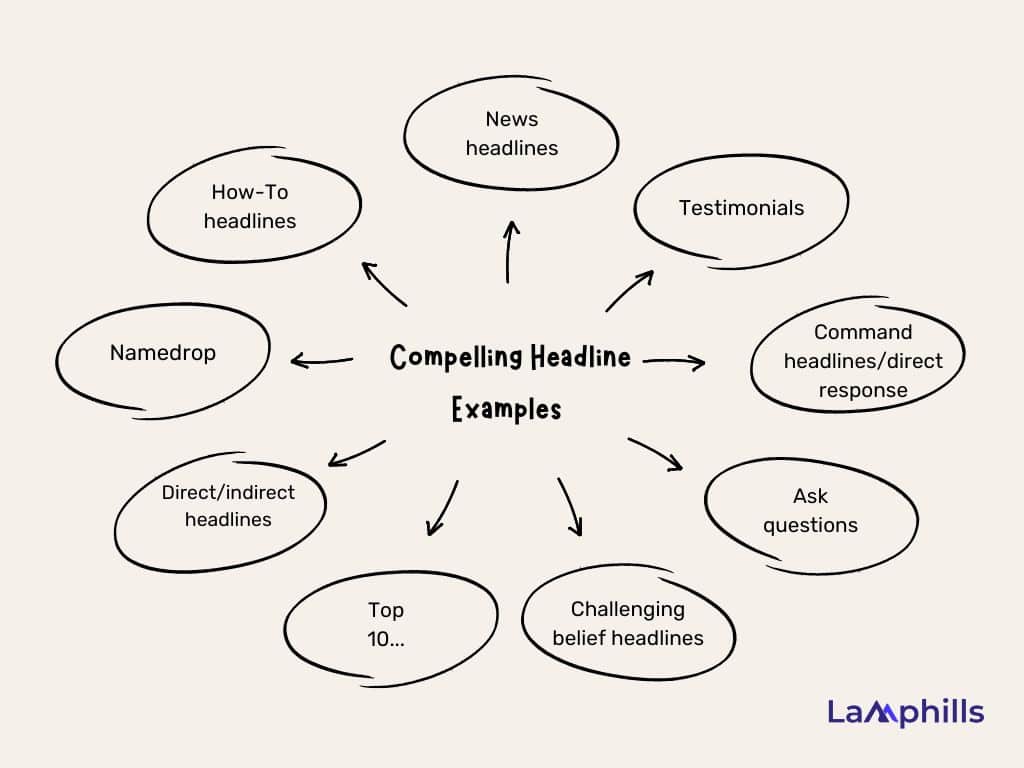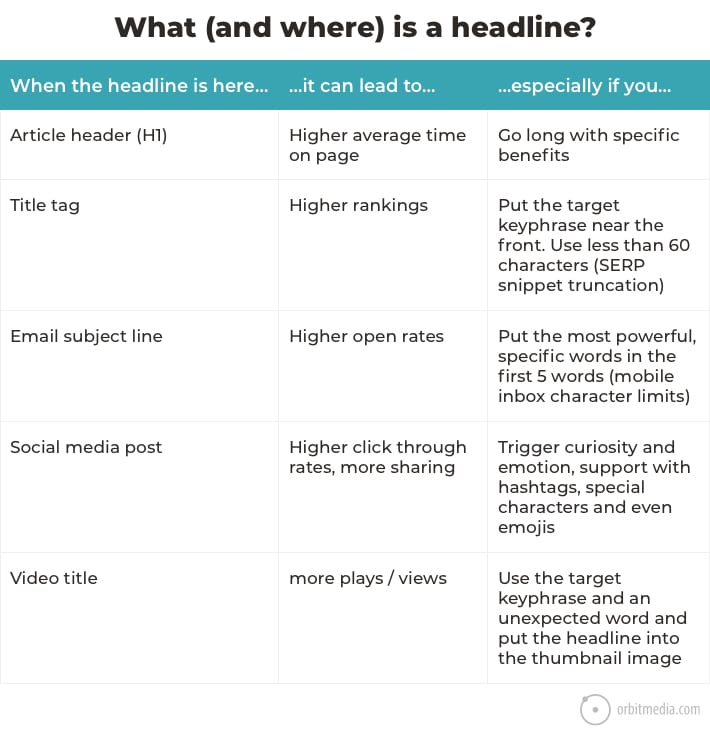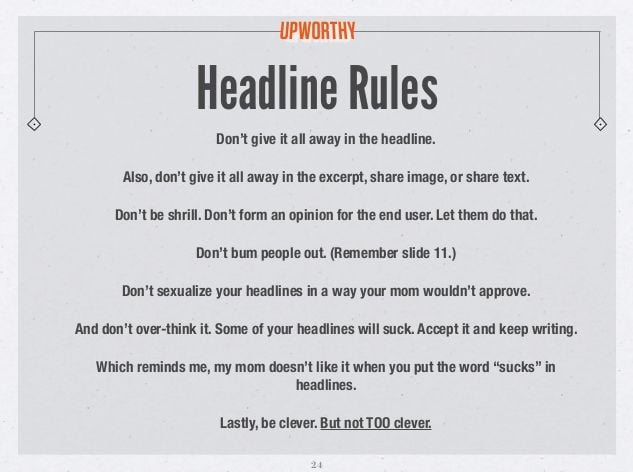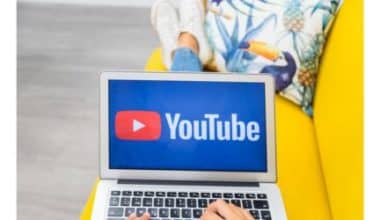All over the world, journalists and copywriters constantly preach the importance of a compelling headline, and for good reason. It is what your audience sees first, the main thing that attracts them to your article.
In simple terms, your audience will only click on your post if the headline attracts them. If it “compels” them to.
Key Points
- A headline is a brief, attention-grabbing statement or question used to attract interest and entice someone to read a piece of content.
- Marketers can use several different tactics when crafting the perfect headline.
- There are plenty of tips on writing headlines, like using powerful words, mentioning benefits, and adding intrigue.
- Marketers can use several different tactics when crafting the perfect headline.
What Is A Headline?
A headline is that bold caption of a news story in few words which draws attention to the story. It summarises and grades a story, telling readers the importance of each story in a newspaper or magazine. A headline is expected to tell the readers at a glance what the story is all about. It must be short, punchy, and attractive to catch the attention of the readers.
Simply put, a headline is a brief, attention-grabbing statement or question used to attract interest and entice someone to read a piece of content, whether that be an article, commerce landing page, or ad. Its purpose is to sell an idea, concept, or product.
Writing a great headline is tricky because:
- There isn’t a single way to write a headline. There are plenty of tips on writing headlines, like using powerful words, mentioning benefits, and adding intrigue. So which one should you choose?
- Using good tips on a fundamentally flawed headline (which I’ll discuss in more detail below) won’t boost clicks. You need to have a sound headline before you can optimize it for clicks.
Compelling Headline Examples Based On Headline Types
Once you do start looking at what other brands and businesses use, you’ll notice that effective headlines are anything but cookie-cutter. Marketers can use several different tactics when crafting the perfect headline. Here, we dive into the trusted headline types.

#1. News headlines
Perhaps the most classic type of headline, news headlines have been a trusted favorite by journalists and writers for decades. These headlines are all about efficiency and relay breaking news or updates about a company in the most clear way possible.
For example, Local Brewery Announces New Operating Hours Amid Pandemic.
#2. How-To headlines
One easy way to provide added value to your customers is by promising to teach them something. And there’s an easy headline formula to help you accomplish this. Start with “How to” and then follow that up with whatever action or insight you want your readers to take away. It seems simple, yes, but there’s a reason how-to’s are the gold standard for converting headlines.
This type of headline explicitly states the value for your customer is compelling because it usually solves some type of problem they may have.
For example: How To Eat Like A Local In New York or How To Stop Feeling Tired After A Full Night’s Sleep.
#3. Ask questions
This type of headline poses a question to the reader (obviously), but not just any old question. You should ask questions that you know your audience will want the answer to — enough so that they’ll be encouraged to click. Focus on the benefit for your audience or customer.
For instance, a company selling gourmet coffee beans could write something like: Do You Know Which Coffee Brewing Method Gives You The Most Flavor?
#4. Testimonials
Sometimes it helps customers to hear from … customers. Testimonial-style headlines rely on customer quotes to do the selling for you. This tactic works well because potential customers can see the benefits of your product or service right away — in the words of someone who was once in their shoes. Plus, you have authenticity working in your favor.
What does a testimonial headline look like? Here’s one headline example: This Cooking Subscription Box Saves Me Hours Of Meal Prep Each Week!
#5. Name drop
Using prominent public figures or popular brand names is always a good tactic to instantly draw attention to your content. This is also a helpful way for smaller businesses or companies to start building brand recognition with their audience or customer base.
There are a couple of different ways to name-drop, but here’s what that could look like [XX Sneaker Brand] Set To Release A Brand New Line Of Kicks This Summer.
#5. Command headlines/direct response
Command or direct response headlines follow a pretty simple formula: Action Verb + The Desired Action. This tactic typically looks more like an advertisement than other headline types, and though obvious, it’s still highly effective and compelling. What does a command or direct response headline look like?
One approach is when you’re trying to get a customer to sign up or subscribe to something: Sign Up For Our Exclusive Cooking Newsletter. The more subtle way to do a command headline looks like this: Clear The Clutter In Your Closet With These Organization Techniques.
#6. Direct headlines
I know what you’re thinking — how does a direct headline differ from a direct response headline? They sound awfully similar, and yes, direct headlines explicitly state the purpose of the article or landing page, but they aren’t necessarily as sales-y as direct response.
Direct headlines typically get straight to the point, with little frills or embellishments. For example, direct headlines can also be in the form of listicles like 10 Vacation Spots To Consider For Your Next Getaway.
#7. Indirect headlines
We have direct headlines, so naturally we must have indirect headlines, right? While a direct headline is compelling because it gives it to the reader straight, indirect headlines are all about the art of subtlety.
Both tactics have their merits, though. The indirect approach keeps an air of mystery that’s intriguing to the user by simply hinting at the main point of the article or landing page. They raise questions rather than answer them.
Here’s what this could look like: Popular Makeup Brand Takes A New Direction In 2022.
#8. Top 10 …
Oh, the trusty listicle. Ten doesn’t have to be the magic number for this type of headline, but the practice of putting XX Best … or Top XX … has been a long-trusted headline formula. Your customers see the benefit of the product or service immediately.
#9. Challenging belief headlines
Now, it’s important to be careful with this tactic. Challenging belief headlines typically use clickbait-y phrases like “You’ll never guess …” or “You probably don’t know …” as a way to entice the user to click on your content. In a way, you’re challenging the reader to see if they actually know what you’re suggesting they don’t.
What does that look like? Here’s an example: You’ll Never Guess Which Of These A-List Celebrities Went To Ivy League Schools.
However, where you can run into some trouble with this type of headline is with platform guidelines. Platforms such as Facebook have set policy guidelines, and sometimes phrases like “You’ll never believe…” can get flagged as violating their rules.
Tips To Craft A Compelling Headline
The average person sees 1,300+ headlines each day and dismisses 99.7% of them.*
*That’s a totally fabricated headline, by the way. But it sounds compelling, doesn’t it?
Even if you do everything else right, blogging your fingers to the bone, everything will fail if you get this one thing wrong.
So here are our headline best practices. Let’s look at all the places they appear and how the success factors vary…

So a great headline isn’t just one thing. A single article may have different headlines in different places. It’s adapted for each context. Do not try to make one size fit all.
Now on to the checklist for writing great and compelling headlines:
Tips For Writing Headlines That Deliver
How To Write A Compelling Headline (3-Step Framework)
There are plenty of copywriting tips that are designed to help you create a more compelling headline, but applying these tips to a headline that ignores one of these three questions will still bomb. Therefore, ask yourself these three questions before generating any headline ideas.
Step 1: What does the content deliver?
Once you decide that your content needs a better headline, your first reaction is probably to think of a way to make it as clickable as possible.
While you probably know that it’s best to avoid clickbait titles (i.e., titles that make false promises exclusively to earn clicks), it’s not uncommon for copywriters to create titles that don’t communicate what the content actually delivers.
For example, I wrote an article about someone’s experience as a YouTube Music Reactor. The article’s original title was “How This Music Reactor Makes $66,000 per Year On YouTube.”
At first glance, that looks like a decent title. It’s certainly intriguing. The only problem is that the article itself focused more on the reactor’s story of selecting songs to react to and growing a community of followers to become an influencer. The last part of the article includes information on his revenue, but it’s not the article’s focus. So, even though the title technically delivers information about his finances and revenue, it’s still somewhat misleading, as revenue isn’t the primary focus.
In addition, a revenue-focused title will attract a more entrepreneurial-minded reader interested in the economics of YouTube music reaction, so they’ll likely leave your content as soon as the article focuses on something else. These people also probably won’t read or watch your future content because they were disappointed with their first experience.
Unfortunately, these negative user signals tell algorithms that your content is unsatisfactory, which can cause your future content to drop in the rankings. So, I changed the article’s title to “Meet XXX: The Story of a YouTube Music Reactor’s Journey To Influence.”
This title aligns much better with the information the content actually delivers. However, it will likely appeal to a smaller audience and attract fewer total clicks.
For this reason, I encourage you to brainstorm titles before writing the content to make sure that you can maximize traffic to your content.
Step 2: What is the goal of someone consuming this content?
The first step to writing a compelling headline is understanding your audience’s avatar and then crafting your content to solve their pain points and help them achieve their goals. If your content isn’t helping them achieve their goals (assuming you’re creating educational content rather than entertainment content), then there isn’t really any incentive for them to consume it.
So after defining what value your content delivers in step one, the next step is to define the goal of a reader searching that topic.
For example, the goal of someone searching “how to write a headline” is likely to increase clicks to their content. That’s why I decided to title this post “How To Write A Compelling Headline in 9 Steps.”
In step one, I determined that the content is about writing a great headline. Then, I determined that the goal of someone searching for content to improve headlines is to increase clicks. As a result, I landed on the title idea “How To Write A Compelling Headline in 9 Steps.”
I also want to mention that someone might have multiple goals for reading this content. For example, they might want to increase clicks, but they probably also have other goals like:
- Generating more brand awareness
- Ranking higher in search engines
- Spending less time writing headlines
- Feeling more confident that their headlines are good
However, they probably aren’t searching for how to write a headline if their primary goal is ranking higher in search engines or increasing brand awareness. In addition, they might want to spend less time writing headlines, but that’s probably not as critical to them as getting more clicks.
Therefore, always select the primary goal of a reader/viewer searching for your content.
Step 3: What is the element of intrigue?
Adding intrigue is often the first tip mentioned when discussing how to write a great headline, but it’s actually the least important. This is because the ultimate headline hack is communicating to the viewer that your content is the solution to help them achieve their goal/solve their problem.
If you’ve already mastered steps one and two, your headline is already 85% of the way there.
I always prioritize clarity over cleverness. If the headline doesn’t instantly communicate the value viewers will receive from your content, they won’t click.
Note: That isn’t to say that you can’t create a “curiosity gap” (e.g., “this is the strategy I used to double my clicks”). In this case, the curiosity gap is “the strategy” as readers want to know what “the strategy” is. Curiosity gaps tend to work better for YouTube videos or news-style articles that don’t require a keyword. Nevertheless, the value the reader will receive is still clear – they’ll double their clicks.
After completing steps one and two, you can make your title more compelling by incorporating an element of intrigue.
Here are some of my favorite ways to make a headline more intriguing:
- Mention a benefit: Ask yourself what benefit the reader will receive by reading your article.
- Example: How To Write A Headline That Increases Engagements
- Mention a pain point: What problem is the audience currently facing that drove them to search for this in the first place?
- Example: Why Nobody Clicks Your Headlines (And The Solution)
- Answer an objection: If someone has already tried to solve the problem, why didn’t it work? Or if they’ve already searched this problem, why did the advice not work?
- Example: 9 Headline Tips That You Haven’t Tried Yet (The objection here might be that most people have already heard all the headline tricks in the book, but they still aren’t working).
- Provide proof: This works particularly well for case study posts.
- Example: The Headline Formula That 10xed My Channel In 30 Days
You’ll notice that there is no element of intrigue in the headline for this blog post. This is because the title was too long, and, as I mentioned, clarity is more important than intrigue.
I would have loved to write a title like “How To Write A Headline That 10xes Your Clicks,” as that would have checked the “provide proof” box and would have been a more compelling title than the one I selected (“How To Write A Compelling Headline in 9 Steps”). However, this post isn’t actually a case study of 10xing clicks, so using a title like that would have broken the rule I laid out in step one – accurately setting content expectations.
Also, for SEO purposes, using a case study wouldn’t have made sense as someone searching “how to write a headline” wants a guide – not a case study.
How Much Time Should You Spend Writing Headlines?
Many bloggers advocate that you should spend an equal amount of time crafting a clever blog headline after writing your main body. Do I think that’s necessary?
Check out the emphasis Upworthy puts on writing and testing their headlines.

So if you don’t feel confident in your post title, I suggest you take Upworthy’s 25 headlines writing challenge.
At first, writing so many headlines might take about an hour. Soon enough, though, you’ll become a ninja blog headline writer who can crank out multiple compelling headlines within a few minutes.
Recommended Articles
- Content Development Best Practices for Higher Engagement
- Crafting CTAs That Convert: Perfecting the Press Release CTA for Explosive Growth
- I Doubled My Traffic Overnight By Using This Curated Content Hack
- How to Get More YouTube Subscribers Free: No Ads, No Spending a Dime
- How To Write a Human Interest Story: Detailed Guide
- How To Write In AP Style Writing: The Ultimate Guide






